Personal Safety
How To Build Your Own Underground Bunker For Survival
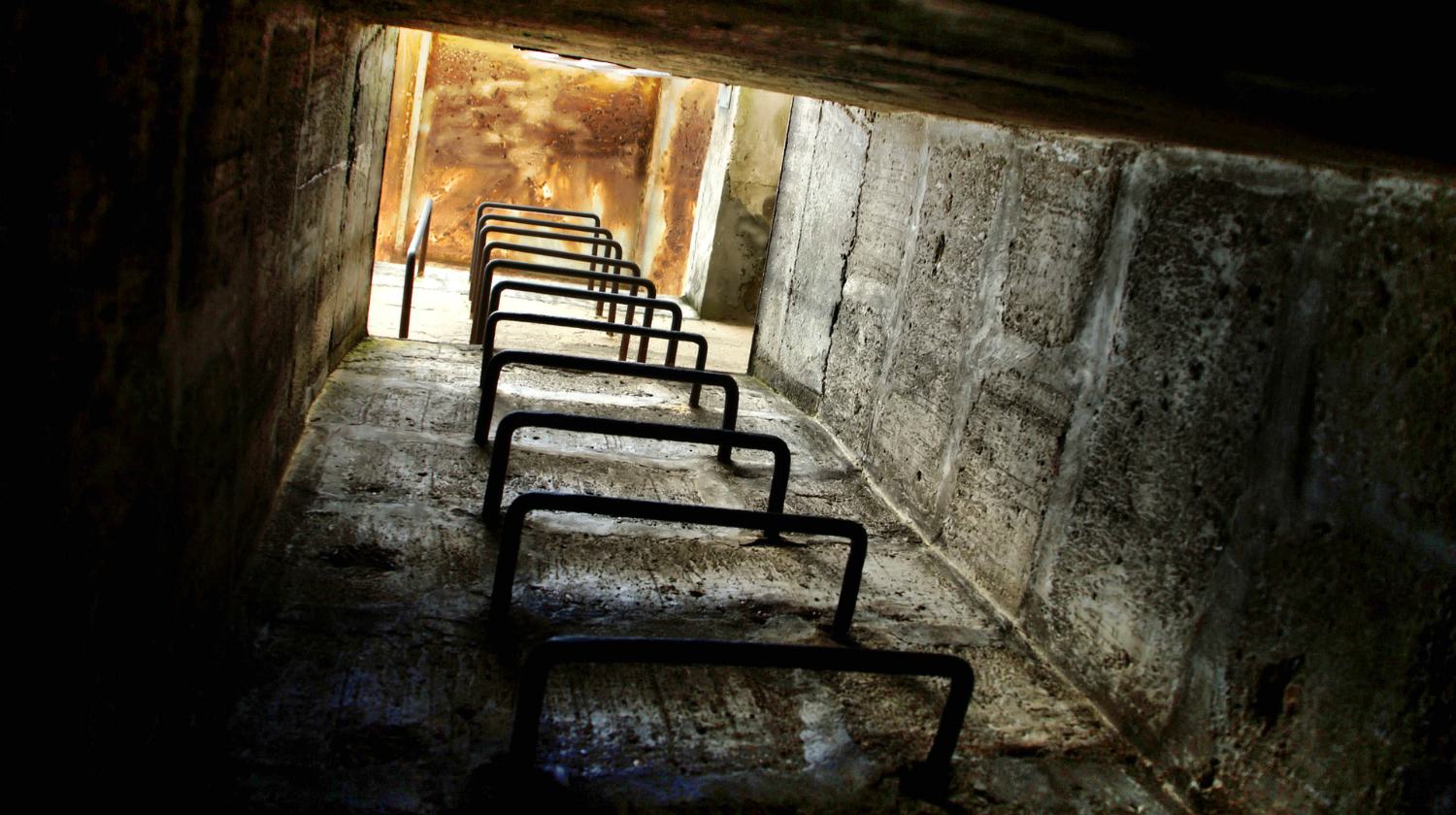
Don't jeopardize your family's safety and carefully plan the structure of your underground bunker!
RELATED: These 5 Doomsday Bunkers are Redefining Luxury
Underground Bunker | Your Personal Haven
Underground Bunker Plans
Have you ever thought about building your own underground bunker? Maybe you're worried that it would cost too much, or be too hard to build.
Having underground bunker plans is one of the smartest investments you can make for you and your family's safety. With all the dangers we're facing today, such as social and global unrest, terrorist threats, natural disasters, you can never be too complacent.
Provide your family with a safe and secure haven by building an underground bunker. Check out the instructions below to learn more.
The Plan
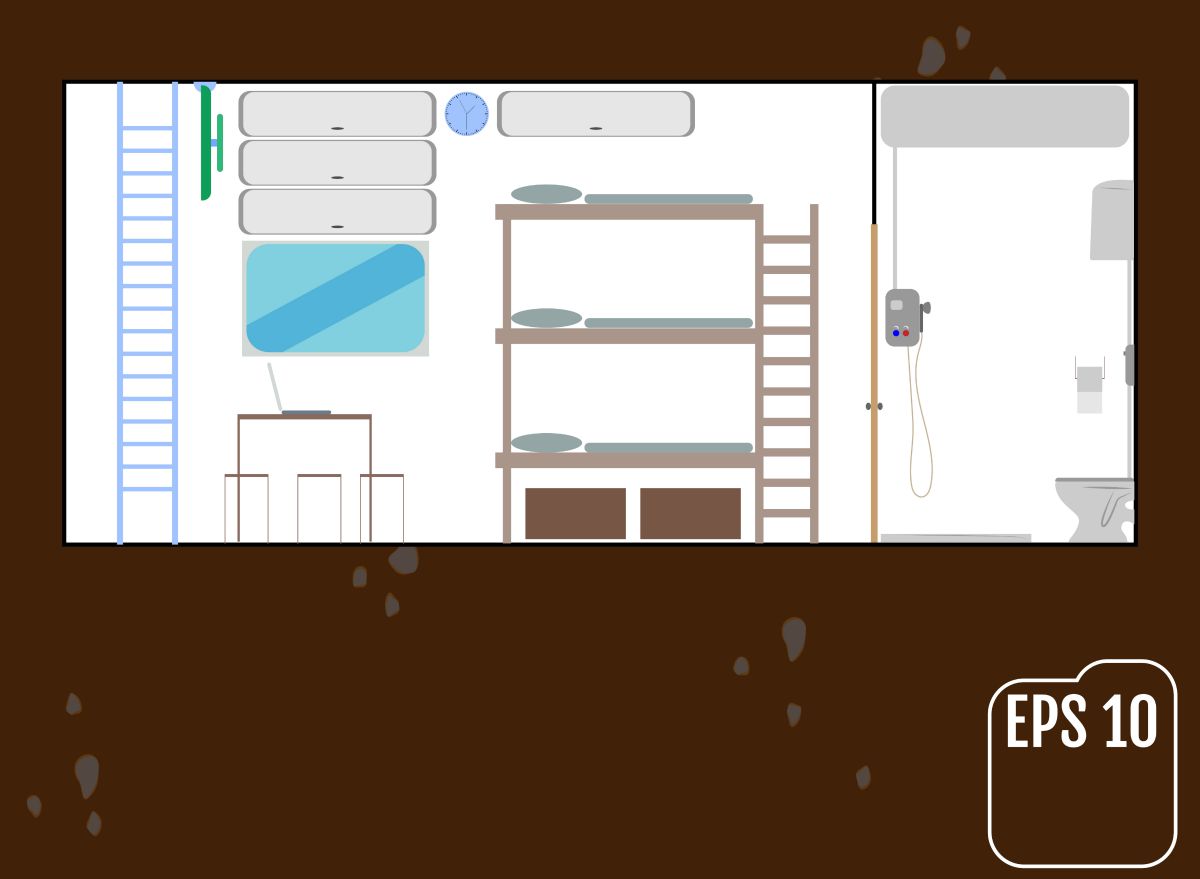
Every devoted survivalist knows that planning is the first thing they need to do regardless of what they have to deal with. Constructing secret underground bunkers is no different.
Before you start excavating your preferred spot, you need to know some basics about the land.
What type of soil do you have? Where are the utility lines?
Consider consulting with a professional before digging on your land, and make sure you're not violating any ordinances by building a bunker. In some cases, you may need to build your bunker on a different piece of property.
Don't break ground until you have your blueprint complete and finalized.
Start Digging
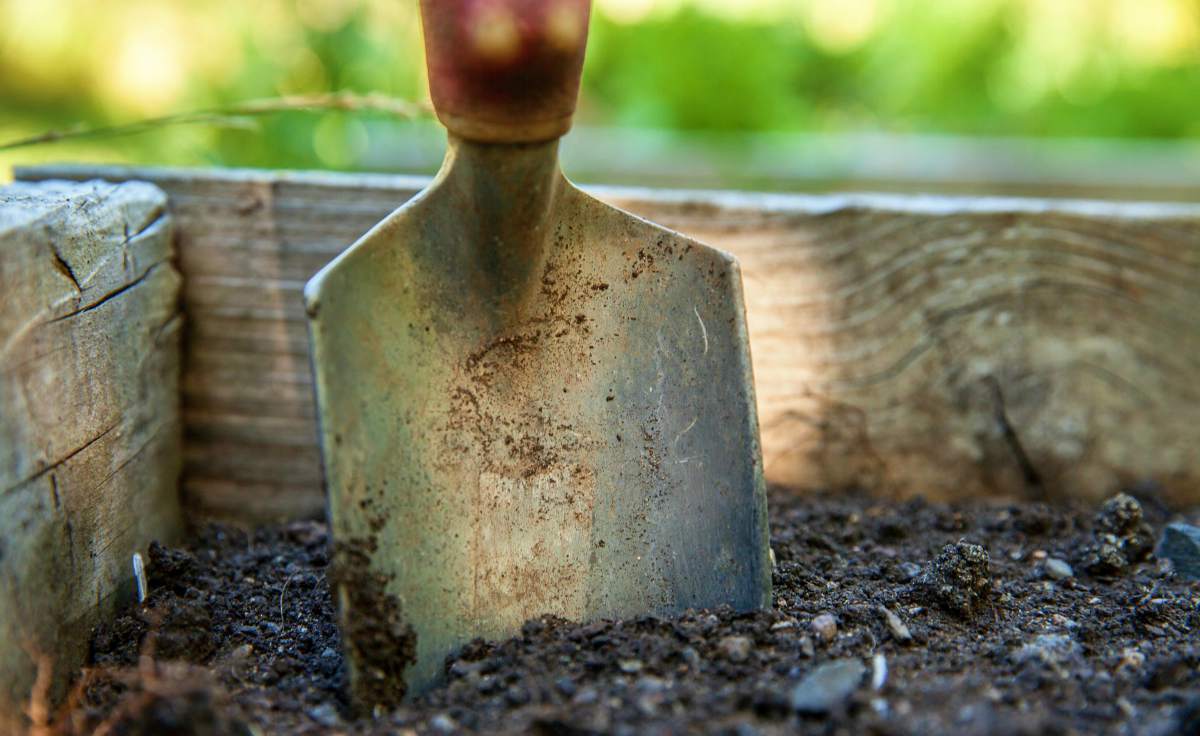
Once you have all the necessary legal requirements and you have all the information and materials you need in building your DIY underground bunker, then let's get digging!
You can do it old school with a shovel, or you can speed up the process by using heavy machinery, such as a backhoe. You can rent one, but it will probably cost you a couple of hundred dollars a day.
Build The Structure
You can build the underground bunker's structure yourself or purchase a shipping crate, but make sure it will fit through the hole. Keep in mind of some advice against using a shipping crate as a bunker, as they are not made to be buried or inhabited.
If you're going to build the structure with your own hands, you need to research the materials you plan on using to make sure they'll hold up over time. Untreated wood, for example, will decompose easily.
Concrete is usually a better option when building the structure of secret underground bunkers. It has the strength to withstand underground construction and it is more cost-effective.
RELATED: The Weakness Of Underground Bunkers
Create Passages
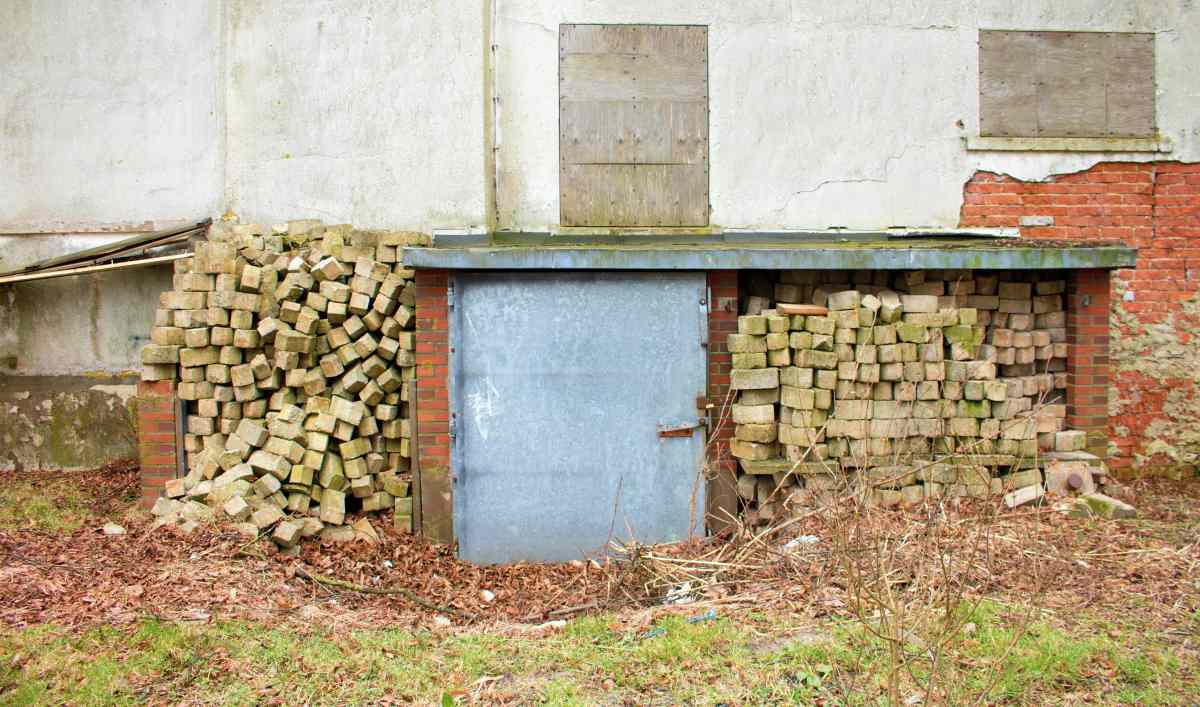
For bunkers, accessibility is key. You can build passages from your home going to your bunker as an alternative way to get there faster especially when SHTF.
You can use scaffolding poles to support the passages, but it is not advisable to use these in supporting the ceiling. Pillars constructed of bricks is a good option but concrete is the best material for this kind of project.
Safety First!
Take the necessary safety precautions when building this project. Severe weather is a mighty adversary when it comes to making your bunker secured.
Check the weekly forecast before you get started. You have to make sure no water will come into your bunker by covering your ceiling with waterproof sheets.
Consider asking some friends to help you with the construction, but only if you trust them with the knowledge of the location of your bunker.
Air, Water, and Electricity
Your underground bunker will not be complete if it doesn't have all the survival features you require. Make sure you have access to water, air ventilation, electricity and of course, food.
Keep in mind this place should have all the necessary things you need in order to survive whatever SHTF episode will unfold before your eyes.
Radio Communication
When you take cover in a bunker, it's best not to go outside until it's absolutely safe. You may not be certain when it's safe to come out and know how bad the outside situation is.
This is when radio communication is very useful. Instructions can be given from an outside source while you're cut off from the people around you.
Make sure your radio is also battery-operated in case electricity is out. You'll never know how bad things can be when SHTF!
Check out this video for another awesome underground bunker idea by colinfurze:
Being a devoted prepper and survivalist means being ready for any kind of emergency. It's time to batten down the hatches.
Our family's safety is what matters most, especially when SHTF. Remember to hope for the best but prepare for the worst.
We can withstand and survive any situation if we are well-prepared. Learn, prepare, and survive.
Penny for your thoughts? Tell us what you think about this article by dropping your two cents in the comments section below!
UP NEXT:
- What Do You Need For Your Underground Survival Shelter?
- Disaster Communication For Preppers | Preparedness
- 6 Prepping Tips For The Mobility Challenged
Stock up on all the gear you need for your underground bunker survival kit in our Survival Life Store!
Follow us on Facebook, Instagram, Twitter, Pinterest, and Tumblr!
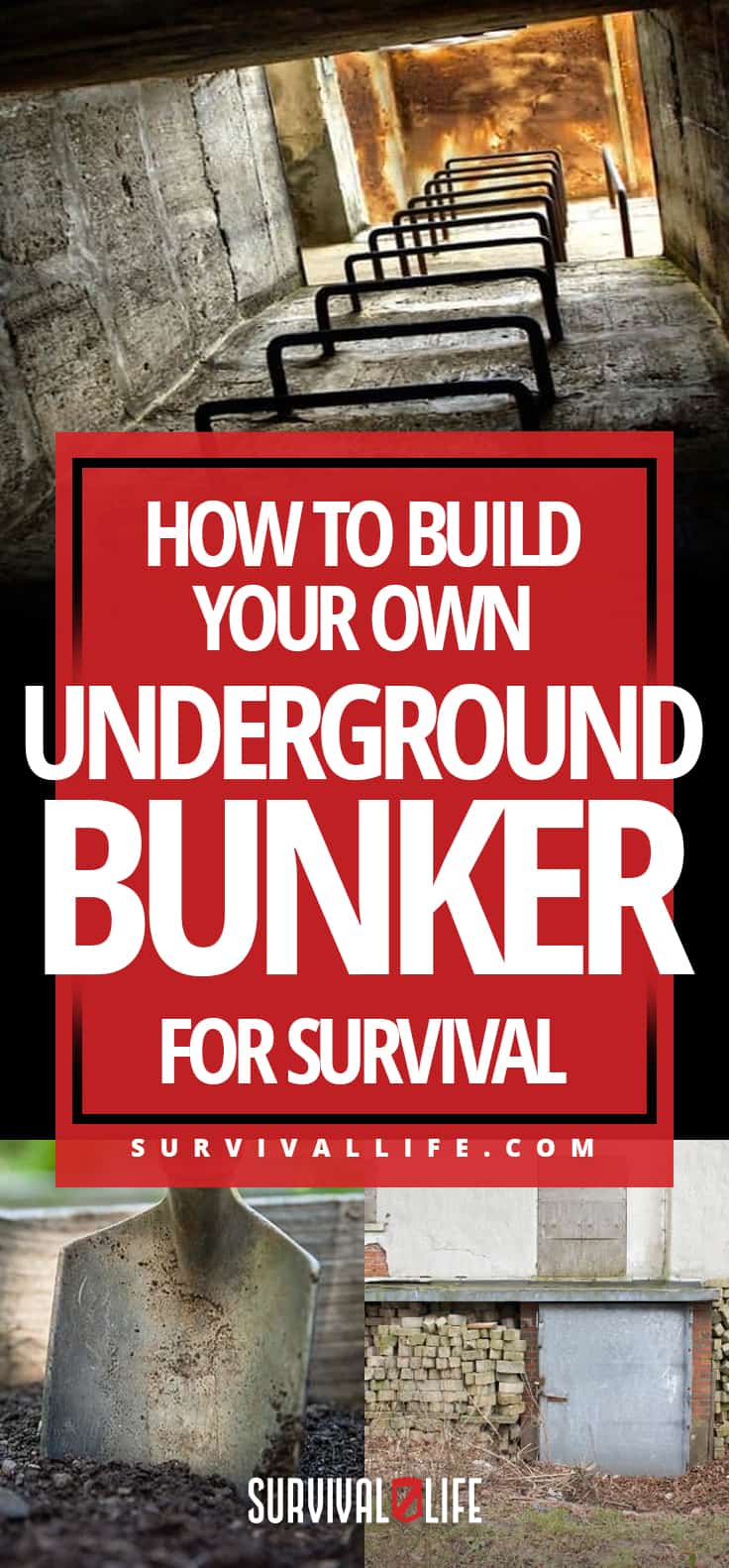
Editor’s Note: This post was originally published in February 2017 and has been updated for quality and relevancy.
-

 Paracord Projects1 year ago
Paracord Projects1 year agoParacord Projects | 36 Cool Paracord Ideas For Your Paracord Survival Projects
-

 Paracord Projects1 year ago
Paracord Projects1 year agoHow To Make Paracord Survival Bracelets | DIY Survival Prepping
-

 Medical Care1 year ago
Medical Care1 year ago21 Home Remedies For Toothache Pain Relief
-

 Knife Laws1 year ago
Knife Laws1 year agoAre Switchblades Legal? Knife Laws By State
-

 Do It Yourself1 year ago
Do It Yourself1 year agoSurvival DIY: How To Melt Aluminum Cans For Casting






Bruce
April 29, 2018 at 7:14 AM
I’d look at building a ‘fruit cellar’ vs. underground bunker in order to avoid local bureaucrats/added costs. Also, Home Depot sells ready-made bunkers in three sizes with air venting already in place and I believe they might offer delivery and installation.
Jeff
April 29, 2018 at 10:07 PM
How would you keep one from condensating/sweating inside…….I guess you would have to have conditioned air ?
Norbert Johnson
August 7, 2019 at 9:10 AM
Dehumidifier. use filtration to recycle the water (I have UV3 Lights inline to reduce the bacterial population by 99%). It is a poor mans atmospheric water condenser.
Norbert Johnson
August 7, 2019 at 9:17 AM
For air supply, (fresh air substitute) try splitting the water into Hydrogen and Oxygen through electrolysis. Let the Hydrogen flow to the outside, and keep the Oxygen on the inside. Recirculate the air via filters and have an O2 meter to determine Oxygen Level.
Anonymous
May 3, 2018 at 9:45 AM
Since I am a single, older lady; I might have to look into the Home Depot thing because I certainly can’t build one on my own..
Anonymous
October 17, 2018 at 10:33 PM
If you get a corporation to install it then your secrecy is blown. If anything get a local contractor to do it. Preferably a family member or trusted friend. The less anyone knows the better
Pingback: How To Build Your Own Underground Bunker For Survival
Pingback: Uses For Shipping Containers | What Survivalists Should Know
Pingback: 7 Cost-Effective Uses For Shipping Containers Survivalists Should Know
Pingback: 7 Cost-Effective Uses For Shipping Containers Survivalists Should Know - Survive!
Cold N. Holefield
February 18, 2019 at 7:02 PM
Interesting floor plan. Over four months I have been working on building a self contained bunker. I have purchased food and rations to last 10 years but it is being recommended 20 years. Do you have a view on this? My model is built after the home I live in, a Yurt, I went eco friendly after Y2K and have practiced self dependency including no longer receiving postal mail and have weened off indoor plumbing, using a compost toilet. I use the internet sparingly. I have deep respect for those who live off the grid and survivalists, something I enjoy learning and practicing daily. I also do not use a TV but do have a CB radio. Went from car to scooter and next is bike. Have tried to stop wearing shoes and consumerable rubber my footwear is natural based from plant fiber found and woven.
Pingback: How to Build a Bunker - Off The Grid
Pingback: 7 Cost-Effective Uses For Shipping Containers Survivalists Should Know | Primitive technology
Pingback: 7 Cost-Effective Uses For Shipping Containers Survivalists Should Know – Ultimate Survival Alerts
Pingback: 7 Cost-Effective Uses For Shipping Containers Survivalists Should Know - Survival Gear Review
Pingback: Primitive Shelter Building: A Necessary Skill - Primal Survival
Pingback: How to Build a Bunker - Modded
Tammie Houston
November 6, 2021 at 6:21 PM
You made a great point when you said you should watch for any utility lines and hazards when digging for your own bunker. I may have to hire excavation services to dig one out for me so that they can make passages that can take some beatings. The hurricanes in our area can get pretty bad so I was thinking it may be a good idea to get a storm shelter built underground. You made some great tips and I’ll be sure to follow as many of them as I can. https://priceexcavating.com/excavation-1